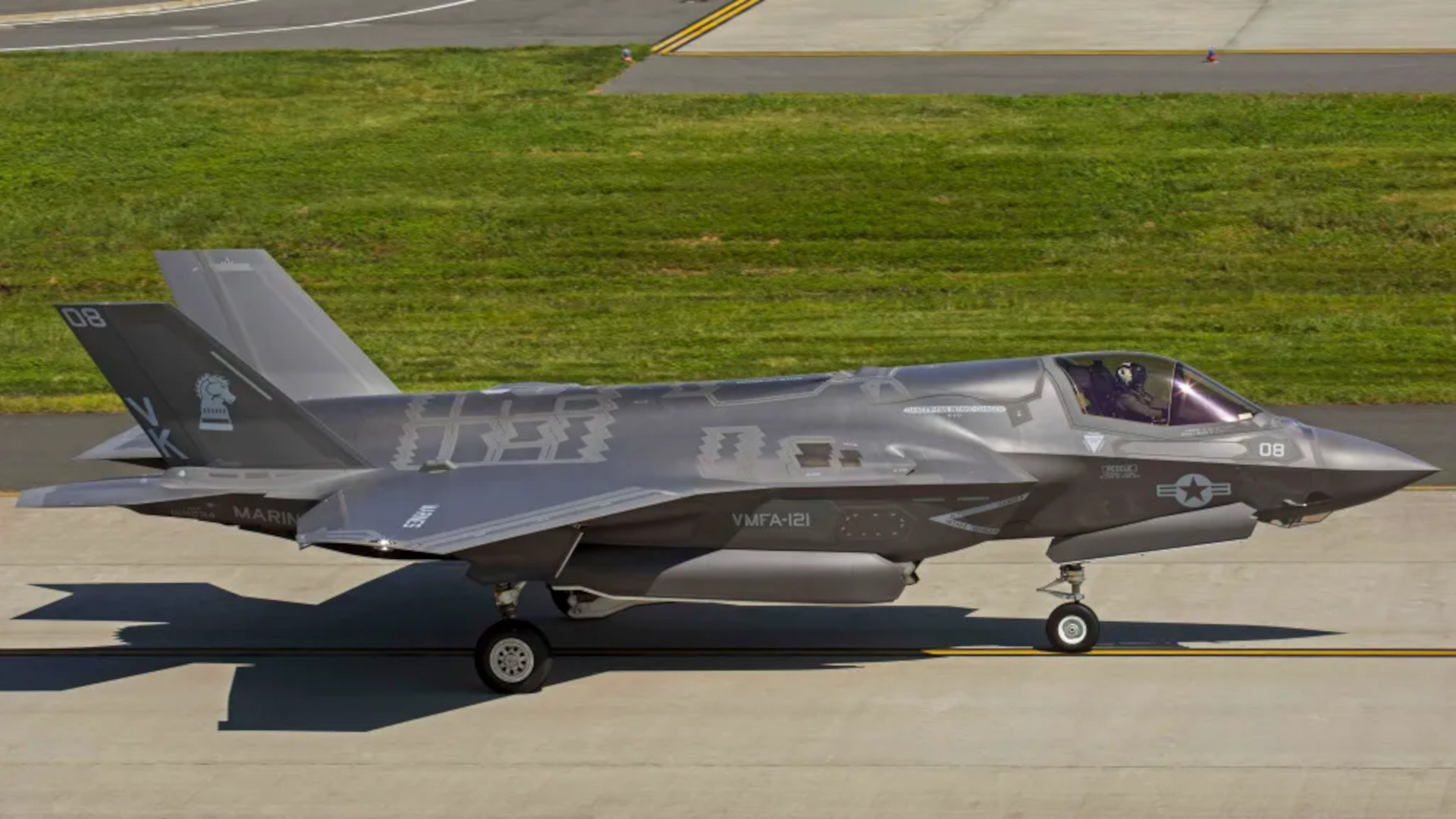A U.S. Marine Corps F-35B stealth fighter appears to have encountered some kind of problem at Marine Corps Air Station Iwakuni in Japan, forcing an emergency egress by the pilot. Several videos have emerged and although there has been no official comment so far, we have approached the Marines for more details as to exactly what happened.
Apparently dating from July 10, the videos in question show a short takeoff and vertical landing (STOVL) F-35B from Marine Fighter Attack Squadron (VMFA) 121 “Green Knights” on the ground at its home base, in the Yamaguchi prefecture. The jet is seen with its engine running and the canopy cranked open. The pilot then performs what appears to be an emergency ground egress, clambering over the rear fuselage of the aircraft and across the wing. They then jump to the ground, aided by grabbing the underwing missile pylon — in this case, not loaded with any weapon. Meanwhile, several fire trucks race to the scene.
It is noteworthy that the integral telescopic ladder on the F-35 is not used for egress on this occasion. Reference to videos of the ladder in use suggests that a member of the ground crew is required to deploy or retract it.
The videos may first have been uploaded by @sheng66722 on the social media site X. According to a machine translation of a comment they made, the jet was subsequently able to taxi to a hangar under its own power, followed closely by a fire truck. The F-35B was then checked over in front of the hangar before entering it.

If this was, as it appears, an emergency egress after a malfunction, it should be noted that this is not an altogether unusual occurrence. It could have been prompted by any number of emergencies. An inoperable environmental control system (ECS), complications from a hydraulic failure that could bring a risk of a fire, or a fire-warning light, are just some potential reasons for such an action in which case the pilot would have needed to get away from the jet as quickly as possible, as they do here. Losing ECS alone can cause the cockpit to quickly turn into a stove in many tactical jets, so getting out is also about surviving the ambient heat.
The “Green Knights” received their first F-35Bs in November 2012 and declared initial operational capability (IOC) in July 2015, before relocating permanently to Iwakuni in January 2017. The squadron has since developed considerable shipborne expertise, becoming the first Lightning II unit to deploy at sea, embarking six F-35Bs aboard the amphibious assault ship USS Wasp (LHD-1) in March 2018.
Since then, Iwakuni has welcomed another F-35B unit within the 1st Marine Aircraft Wing, VMFA-242 “Bats” having declared Initial Operational Capability (IOC) in September 2021.
By virtue of their location in Japan, these are among the ‘tip of the spear’ combat squadrons in the U.S. military. Only this month it was announced that the Marine Corps will adjust the number of F-35B aircraft based at Iwakuni. In a statement, the Marines said that they “will continue to maintain an enduring and rotational aircraft presence at MCAS Iwakuni to ensure the necessary capabilities to support the defense of Japan,” although no further details were provided.
There has been at least one previous incident involving VMFA-121 F-35Bs, as we have reported in the past.
In December 2022, one of the squadron’s jets was forced to return to Kadena Air Base, Okinawa, after a suspected electrical problem. It then suffered damage after a nose-gear collapse when it was being towed back to the flight line.
F-35s, of all versions, have been involved in a number of mishaps, including several total airframe losses. The most significant incidents to have affected the U.S. Marine Corps F-35B fleet, specifically, include a pair of crashes, which we reported on here and here, while the United Kingdom’s Royal Air Force also lost an F-35B in a dramatic carrier accident in November 2021 that we detailed at the time.
More recently, a Lockheed Martin-owned F-35B crashed on the runway at Naval Air Station Joint Reserve Base Fort Worth in Texas during a hover test in December 2022. You can read about that mishap here.
This latest incident at Iwakuni appears to have seen the pilot escape unscathed, while the fact that the aircraft was reportedly able to move under its own power shortly afterward suggests that it likely didn’t receive any significant damage.
Incidents of this kind may not be that uncommon, but they are certainly interesting to see and we will continue to update this story once we have more information.
Contact the author: thomas@thewarzone.com
